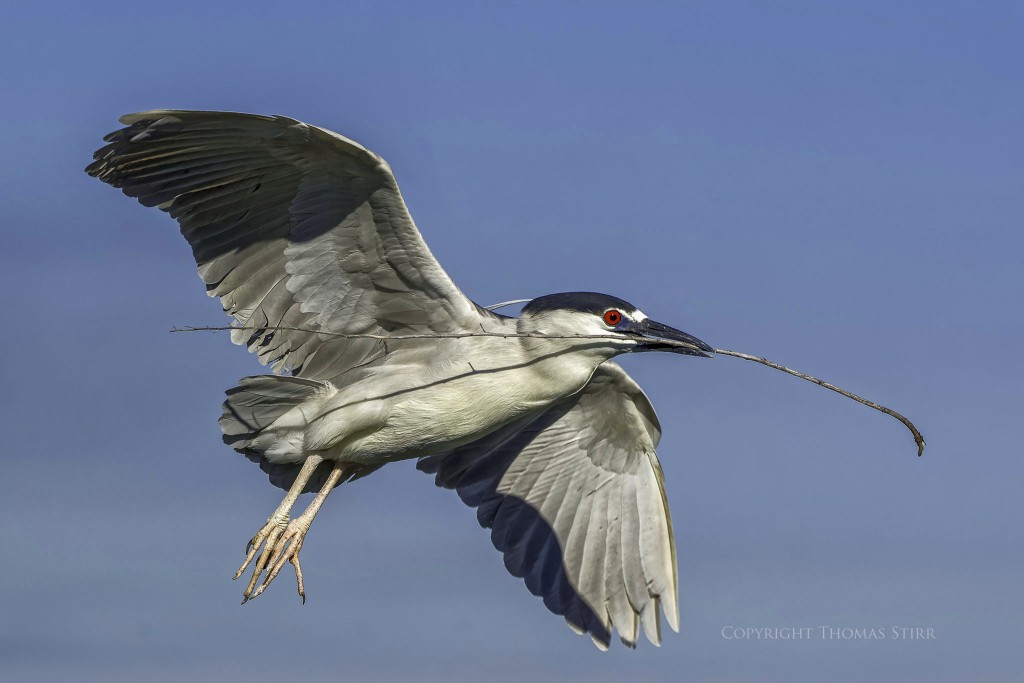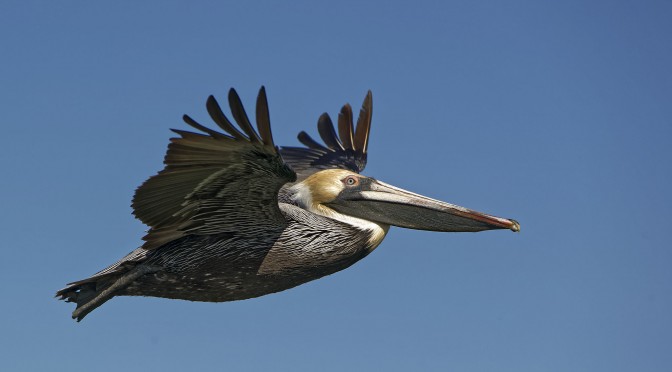With the introduction of lenses like the Tamron 150-600 f/5-6.3 VC more people than ever before are using long telephoto lenses. Sometimes they’re disappointed with their initial results when using these lenses hand-held, especially at slower shutter speeds. This short article provides some tips that can help improve results when photographing hand held.

Angle the left side of your body towards your subject
If you stand in a position facing your subject and ‘squared off’ to it, you’ll likely find it is much harder to hold your lens steady. Take a half-step towards your subject with your left foot and angle the right side of your body away from the subject. The actual angle that is best for you will be an individual decision so try different angles while doing some test shots to learn which is most comfortable and produces the best quality images.

Form a solid support triangle.
Think of your elbows and eye brow as points of a triangle. To create a solid support for your lens bring your elbows in tight to your rib cage and press the viewfinder of your camera firmly up against your eye brow.

Adjust the angle of your arm extension.
The angle of your support arm is like a shelf bracket. Depending on the weight of your lens you’ll need to adjust how far away from your body you hold your telephoto lens and where you position your elbow against your rib cage. The image above shows a ‘standard’ elbow position.

With heavier lenses you may need to bring your left elbow further to the right on your rib cage and change your wrist angle to provide additional support as seen in the image above.

Control your breathing
Take short, shallow breaths as you are framing and focusing on your subject, and pressing the shutter. Taking deep breaths can cause your chest to heave and create lens movement. Holding your breath while shooting can create some quivering and lens shake which can be accelerated the longer you hold your breath, so this needs to be avoided. Many folks may not even be aware that they are holding their breath prior to depressing the shutter on their camera.

Shutter finger movement
Use a slow, deliberate movement when pressing the shutter of your camera and avoid a fast, jabbing finger motion as this can put downward pressure on your camera body and create lens movement at a critical point during your image capture.

Wait for the image stabilization to settle
Half-depress your shutter gently and allow the image stabilization of your lens or camera body to settle before taking your image. If you rush your shot you run the risk of your image being blurred, or not being framed exactly as you want if the image stabilization has not settled down. The vibration control on lenses like the Tamron 150-600 settles in quickly so waiting for a split second should not cause you to miss any shots.

Angle your tripod collar
By changing the angle of your tripod collar up 90-degrees to the right, you’ll find you can hook the bottom two fingers of your shutter hand on the tightening knob of the collar. This will help you brace the lens against the lens mount in the camera body and allow you to hold the lens hood of your lens and use it like a bellows, making it faster to change focal lengths with your zoom.

Brace your body
When shooting at slower shutter speeds brace your body by leaning up against trees, large rocks, walls or other types of structures if possible. This will create additional stability for your shots.

Cushion your lens
You can also add some stability by using the fleshy portion of the heel of your hand to cushion your lens.

Practice finding subjects quickly in your viewfinder
Take the time to practice bringing your camera up to your eye quickly and finding your image subject in your viewfinder. This creates some ‘muscle memory’ and can help you capture a lot more usable images. It also helps to practice your panning technique.

 Nikon D800 + TAMRON 150-600 f/5-6.3 VC, f/8, 1/1600, ISO-400, 900mm (shot in DX crop mode)
Nikon D800 + TAMRON 150-600 f/5-6.3 VC, f/8, 1/1600, ISO-400, 900mm (shot in DX crop mode)
My intent is to keep this photography blog advertising free. If you enjoyed this article and/or my website and would like to make a modest $10 donation through PayPal to support my work it would be most appreciated. You can use the Donate button below. Larger donations can be made to tom@tomstirr.com through PayPal.

Copyright Thomas Stirr. All rights reserved. No use, duplication or adaptation is allowed without written permission.


This technique is the same technique used by offhand rifle shooters….and indeed practice makes perfect. Your website offers so many helpful tips…..along with beautiful examples. I love the Nikon 1 V2 along with the FT-1 and a Nikkor macro lens.
Thank you!
Hi Pat,
I’m glad that you are enjoying my website – and thank you for the supportive comment!
Tom
Hi Tom:
Super article on holding these long and heavy telephoto lens. I have been practicing a lot this spring with the Tamron 150-600mm zoom lens and have found your techniques to be very valuable in obtaining more “keeper” images. I was even able to get a reasonably good image of a tree swallow darting over the water at Dufferin Islands just south of Niagara Falls. Thanks for posting such useful tutorials. I look forward to more of them yet I know you have a very busy summer schedule. Your pictures as always are superb!
Hi Ray,
Glad you like the article and that you’ve been getting more ‘keepers’!
Tom
Hi I have just bought 150-600MM tamron, unfortunately I am confused with the focus mode I am using D7000. It fails to focus on flying birds even in AFC with Auto or 3D with 39AF points. Am I doing something wrong? Even even day time it fails to focus fast at 600mm.
Hello Sahasrangshu,
Some older Nikon bodies like the D7000 can suffer from ‘focus lag’ especially when trying to capture birds in flight. This was noted in my review of the Tamron 150-600. You may want to try AF-C and use 9-point AF to see if that works better. Try and get the focus point on the head of the bird if possible.
If that still does not work and you still experience problems you may need to send the lens back to Tamron under warranty to see if they can correct the issue.
Tom
Good day Mr Stirr, very useful and visual article. It will help a lot for people finding a right hand hold technic like me.
Have a nice week end
Hoan Luong
Hello Hoan,
Thanks for the positive comment! I’m glad you found the article helpful.
Tom